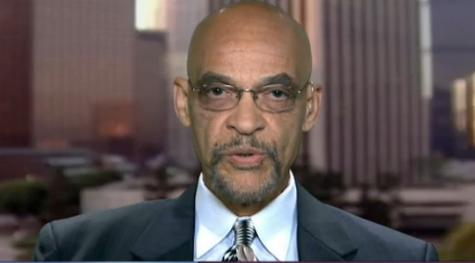Earl Ofari Hutchinson
After trying and failing at everything under the sun to get President Elect Joe Biden’s win scrubbed, Trump had one last desperate card to play, both involved the electoral college. One was to try to get the legislatures in the swing states that gave their electoral votes to Biden to nullify the Biden votes. The other was to beg, implore, hector the electors to snub established requirement that electors vote for the popular vote winner of the state, in this case Biden, and give their electoral vote to Trump. He’d need to get at least forty to switch to him.
The first ploy went nowhere. The other wouldn’t either. In the entire history of presidential elections, and nearly 25,000 electoral votes cast, fewer than 100 electors have ever bucked the tide and voted opposite the electoral consensus.
Now, millions of Americans, especially Democrats, have screamed for two decades to scrap the Electoral College. The shout to rid the presidential election system of the college was loud after Bush edged out Al Gore in 2000. It hit fever pitch after Trump’s electoral college win in 2016 over Hillary Clinton. Gore, and especially Clinton, handily won the popular vote.
This time around few words of complaint is heard about the Electoral College. The reason is simple. It worked the way it should work if we’re to have it at all. Biden won popular vote and he won the electoral vote. This removed from the table the counter complaint that getting rid of the Electoral College will render the small states politically impotent, and the interests of its residents will be ignored.
The Biden Electoral College win pointed to the reasons that the Founding Fathers at least publicly stated they created the Electoral College system for picking presidents.
They argued that there is an element of democracy in how the system operates. The electors are selected by the two parties in the states. They have total discretion over the selection process and those electors are based squarely on the number of popular votes in the state that a presidential candidate receives. So, there’s no chance that a Democratic contender who gets fewer votes than his or her GOP opponent can corral most of that state’s electors.
The Electoral College then doesn’t neuter the popular vote. The totals in each state do count, and count big, in the number of electors that go to the presidential candidate who gets most of the votes in the state. No matter how many times say a GOP presidential candidate wins Red State South Dakota, the number of electoral votes there can never come close to the number of electoral votes that say Maryland or Illinois, two reliable Democratic vote states have.
Trump won the presidency by barely edging out Clinton in the popular vote in five key swing states and thereby getting their electoral votes and the presidency. He still had to win the popular vote in those states, barely. But it was still a majority win vote for him. This forced him to practically camp out in those states and address the interests and concerns of those state’s voters.
Without their votes, both popular and electoral, Trump almost certainly would have been little more than a faint presence in them. Former President Obama understood their importance too. He won all five of those states. This included their electoral votes. This showed that electoral votes are fluid and not the sole preserve of one party or another. If the Electoral College didn’t exist, and it came down solely to the popular vote, then Trump would have made a beeline for California and New York and virtually camped out there.
The Electoral College system at least ensured that the states such as Wisconsin also get their share of presidential attention. This makes the presidential campaign a national campaign which it would not be if presidential candidates need only win the popular vote in California and the handful of other big population states.
This forces the Democratic Party and the GOP to expend greater time, money and party resources in the states that have been largely bypassed in the past presidential contests. In short, they must build real party networks in those states that can address issues and concerns there and put staff and volunteer boots on the ground in those states. The pay-off is in making these states true competitive battlegrounds, with substantial support for both parties.
The Obama campaign did just that. He won most of the swing states. This strengthened the Democrats in those states. Trump followed the same script in 2016 and he won them too. This strengthened the GOP in these states. Biden did the same in 2020.
The calls will continue to reform or to outright dump the Electoral College. But after the Biden win those calls will be much fainter.
Earl Ofari Hutchinson is an author and political analyst. He is the author of What’s Right and Wrong with the Electoral College (Middle Passage Press) He is a weekly co-host of the Al Sharpton Show on Radio One. He is the host of the weekly Hutchinson Report on KPFK 90.7 FM Los Angeles and the Pacifica Network.

